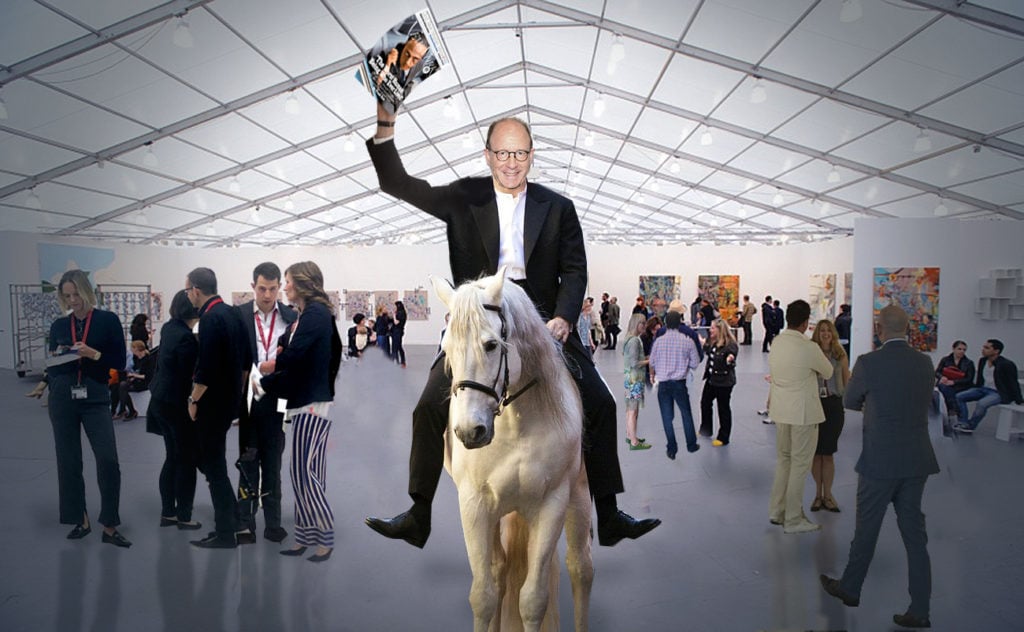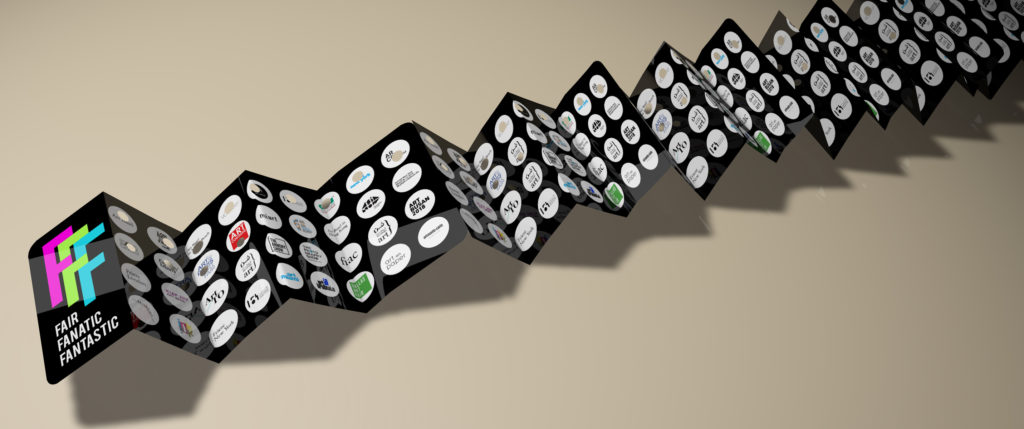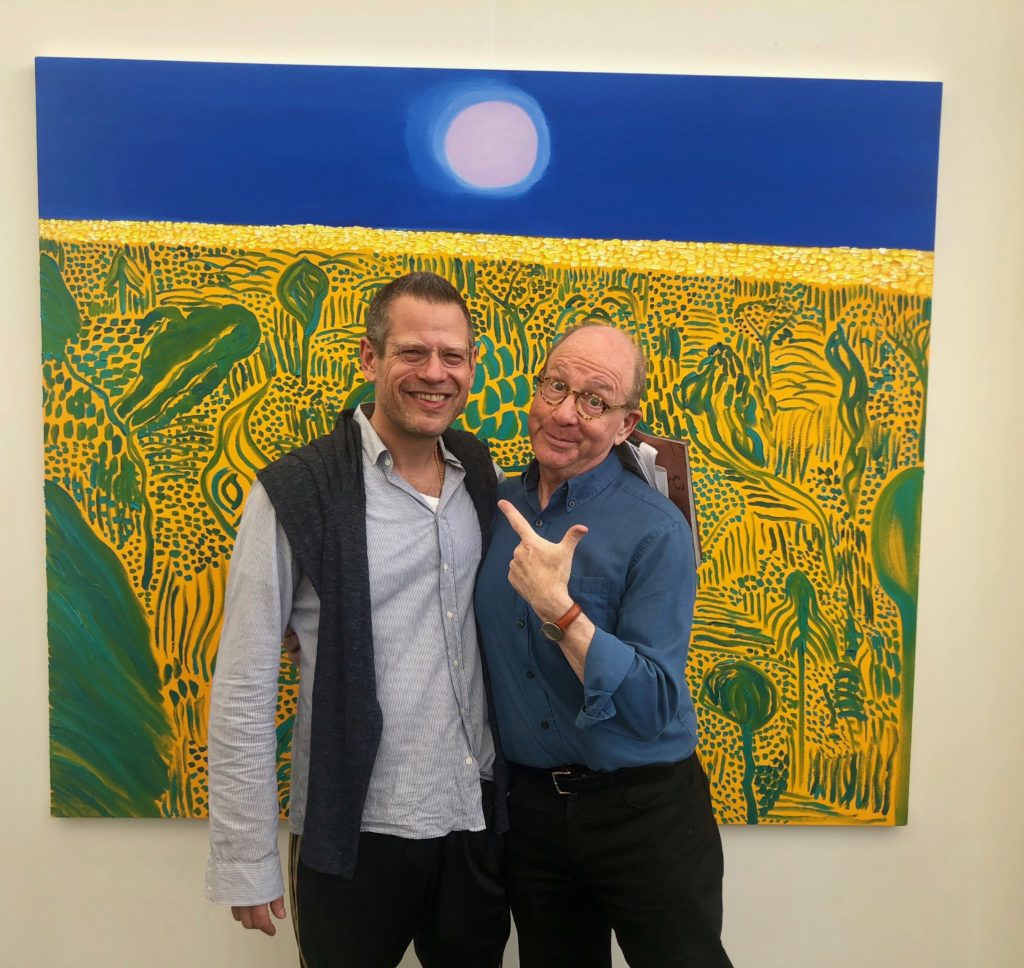Opinion
Get Off the High Horse, Jerry Saltz! Kenny Schachter Mounts a Last-Ditch Defense of Art Fairs
Art fairs aren't the enemy, our columnist says. In fact, they're our friend!

Art fairs aren't the enemy, our columnist says. In fact, they're our friend!

Kenny Schachter

Like Paul Revere riding into town in the dead of night to warn the colonials of the impending British invasion, Jerry Saltz rolled into the art world’s inboxes and social media feeds on the morning of the opening of two New York mega fairs, Frieze and TEFAF, to sound an urgent alarm. Fresh off his Pulitzer, the critic proclaimed to one and all in his New York mag column: “As a system, art fairs are like America: They’re broken and no one knows how to fix them.”
I have some (dispositive) news for you, my dear friend Jerry: You live in a parallel universe. The only thing broken with fairs was the air conditioning at Frieze this year. (They may have saved some money by skimping on the electricity, but they might pay an inordinate price for their parsimony; see part two of this column, coming shortly.)
The Art Basel art-market report, formerly known as the TEFAF report (now even market reports are beginning to trade like Stingels, it seems), calculated that in 2000 there were 55 fairs as opposed to 260 today. I should go to all of them in a single year as a joke, like when Damien Hirst launched his Spot Challenge in 2012 for anyone who visited all 11 branches of the Gagosian empire then dotting the globe to view his spot paintings. The prize then was a signed, dedicated print (big whoop). What would I win if I managed to trawl all the fairs? A free hospital stay? Oh, by the way, there are now 16 Gagosians and a flood of more spots—the Hirst machine is still at it.

Win a free night in a hospital if you suffer through all 260 art fairs in a year! Photo illustration courtesy of Kenny Schachter.
But, anyway, Saltz missed the boat on the reason for the ever-multiplying number of fairs—a simple economic phenomenon called “demand.”
In essence, everything and nothing is wrong with the art world, and fairs are no exception. They are as faulty and flawed as democracy itself. Philosopher Joseph de Maistre (1753–1821) said “every nation gets the government it deserves,” and the same could be said in relation to art and the market. If anything, it’s the collectors—rather, spec-u-lectors (traditional collectors are all but extinct)—that are fucked up, not the fairs. Their incessantly ballooning numbers are responsible for creating the demand for fairs, while, at the same time, the attention spans of market participants and their interest in holding onto an artwork have shrunk. Where once slow-cooking connoisseurship was prized, now these buyers treat art as fast food to be consumed frantically—then disgorged just as swiftly at auction. (If from Frieze, then at Phillips; if from an Art Basel, then at the Sotheby’s/Christie’s axis.)
The internet, smartphones… shit changes, dude, for better and worse, and who can say that the gallery/fair model is the only or best? Surely, new unforeseen ways will follow. At no point since art progressed from cave wall to phone and fair booth (whether it’s an improvement is debatable) has it ever been easy to make a living off of artworks, nor will it be. I comprehend that visiting 190 galleries—this year’s Frieze count—in a few hours is like falling into a wormhole, with the paintings and sculptures spinning by at a pace impossible to absorb. Yes, it’s all but impossible not to become desensitized by the superfluity of so much art. So: pace yourself, and/or revisit. Consider it a matter of convenience! Life is so short to begin with, not to mention what’s left of mine—what 20, 25 Basels? (When that’s how you measure your existence, the diagnosis is clear: you’re not well.)
Says Jerry, “Like America, [fairs] also benefit those at the very top more than anyone else, and this gap is only growing… This art-fair industrial complex makes it next to impossible for any medium/small gallery to take a chance on bringing unknown or lower-priced artists to art fairs without risking major financial losses.” But Frieze was chockablock with just such art that was new to me, priced (relatively) cheaply, and appeared to be selling, some of it at a fast clip. Probably a lot more than you’d think. He adds, “high-end galleries clean up without showing much, if anything, that’s risky or innovative:” Hello? That’s not their remit—it’s to find and showcase quality pieces like the stunning Bruce Nauman sculpture at Hauser & Wirth at Frieze (in itself far from a commercial undertaking, in fact).

Kenny Schachter and Jerry Saltz at this year’s Frieze New York. Photo courtesy of Kenny Schachter.
Jerry, we don’t live in North Korea, where you can proscribe things you don’t like and order life the way you want it. Even Kim Jong-un is about to switch sides (so keep your eyes peeled for Art Basel Pyongyang). Nor is the art world another version of the UK’s subsidized National Health System—where, incidentally, sometimes you get what you pay for: not much. Yes, fairs feel rote, stale, blah-blah (as Mel Bochner would put it). I spent my adult life evading routine until I accidentally developed one: going to fairs all day long, all year round. Yet, art is also a cocktail of museums, galleries, fairs, auctions, biennials, etc., and a tasty, potent one at that. In all forms, art is managing to thrive globally and is recognized as more vital than ever.
On a certain level, it’s pointless to engage in an endless debate about something that just is, like the weather. (Okay, that never stops us in the UK, where just the other day it was sunny, cloudy, raining, and hailing, all in the span of four minutes.) In defense of a life lived in convention centers, Basel’s Marc Spiegler told me: “Fairs drive people to galleries and rejuvenate the collector base. If they didn’t exist, gallery attendance wouldn’t get any better, and the auctions would just pick up the slack.”
Yeah, right. Ignoring such nonsense, I’ll just say that, if not for the pull of fairs, I would not have visited loads of galleries worldwide. For example, it was Hong Kong (before and after the Basel takeover) that in turn initially brought me to Beijing and Shanghai. There are limits, though. Out of principle, I would never under any circumstances visit the new Basel-empire Düsseldorf iteration—the region simply cannot shoulder two fairs, and the newcomer will never succeed in cannibalizing Cologne, despite their geographical proximity and the intent of the Basel mothership.
Um, see you in Basel next month. And I still love you, Jerry.